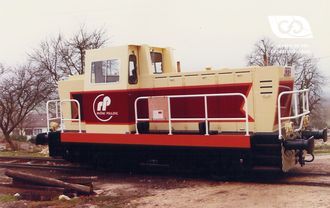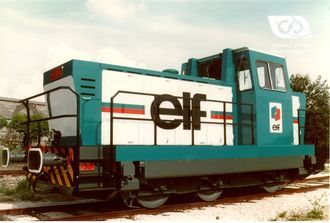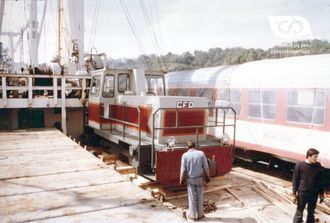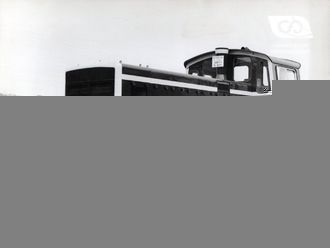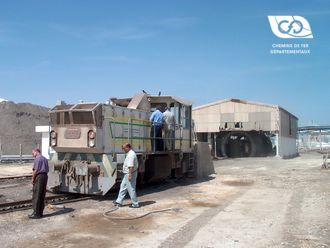The F 2D33 range of shunters is the big sister of the D 2D33 range. It takes the concept of twin machines even further by offering a high performance six-axle system for a measured budget. This unique solution in the existing range of railway rolling stock enables it to provide exceptional traction force even on degraded tracks or poorly adherent rails without using bogies.
Presentation
As with the D 2D33, the use of two shunters as a multiple unit, i.e. one of the shunters controls the driving of both simultaneously, doubles the tractive effort. When this arrangement is used permanently, a shunter associated with a "truck" (or the nickname "mule" or "calf") has often been used, it is in fact an identical vehicle but without a cab. This arrangement was simpler and less expensive than using two shunters.

Shunters type F 2D33 go further in this solution. If they are indeed composed of two identical chassis in the lower part (each chassis with three driving axles), there is only one thermal unit to ensure the traction of both chassis.
Inter-vehicle linkage
The connection between the two chassis is not provided by the conventional coupler, but by a drawbar which provides a more rigid connection for the unit, which then behaves like a DC diesel locomotive. Simpler than a bogie locomotive and therefore more economical in terms of investment and operating costs, the F 2D33 shunters will provide the same services in terms of tractive effort.
Traction system
This range of shunters is available with CFD D33 DC traction motors. Each chassis has a double traction motor which is connected to the corresponding axles. However, the modular design of the electric traction systems allows the adaptation of liquid-cooled permanent magnet motors for continuous operation even at very low speeds (on request). In addition, the large space available in the bonnet of the coupled vehicle allows the installation of additional energy storage systems or auxiliary power units (APU).
- Up to approx. 46 t (450 kN) of tensile force at take-off
- From 15 to 22 t per axle
- Metric or standard track gauge
- From 320 to 550 HP / 240 to 405 kW Diesel
- Clearance EN 15273-2
- Maximum speed of 30 km/h
| Technologies | Continuous current (F DE D33) |
| Traction motors | 2 x CFD D33 |
| Traction motor power | 4 x 145 kW |
| Diesel engines | CAT or VOLVO Possible solutions in particular with CUMMINS, LIEBHERR, DEUTZ, MTU, JOHN DEERE, SCANIA or other engines. |
| Starting tractive effort | 46 t (450 kN) |
Hybridation
The space freed up by the absence of an internal combustion engine and cab on the second chassis allows the installation of traction batteries under the bonnet, making it possible to support the internal combustion engine at peak power or to operate in permanent electric mode (the diesel engine then only recharges the batteries when the engine is stopped). Catenary recharging solutions are possible. It is also possible to position the diesel engine on the trailer, reducing noise emissions from the compartment close to the cab.
Driver's cab
The cab is identical to models B and C with a single central console with a driver's station on each side allowing the machine to be controlled in both directions of travel. The cab is air-conditioned and has an optional heating system that operates even with the diesel engine switched off thanks to a diesel boiler connected to the fuel tank. This boiler is also used to warm up the diesel engine before starting in cold weather or to keep the engine warm when using Start and Stop.
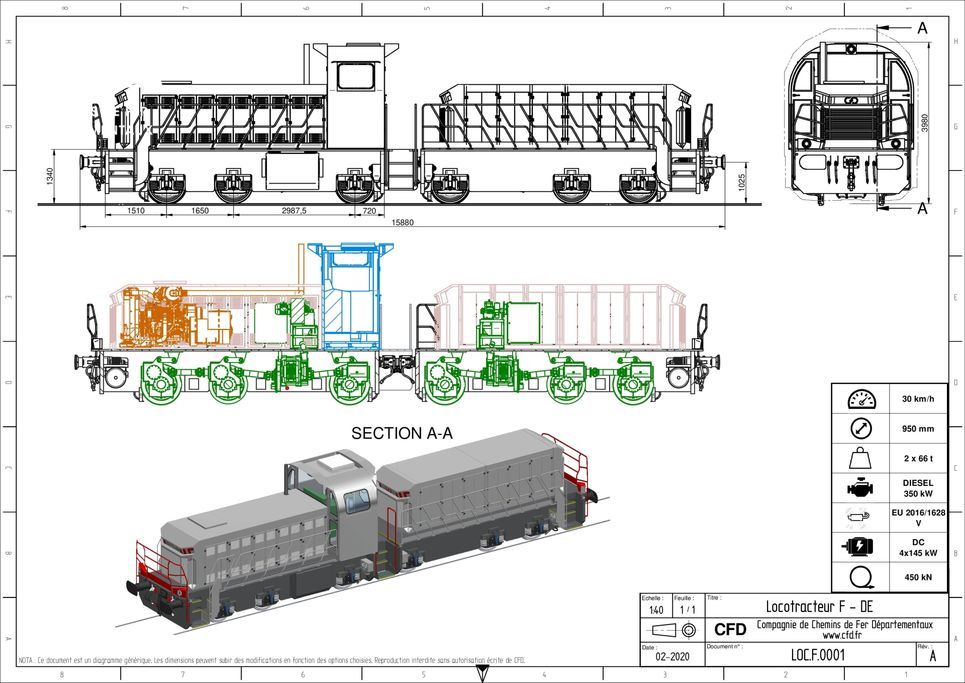
EQUIPMENT
- FUEL CELL
- 800L
- COMPRESSED AIR GENERATION
- 800 L/min or 1800 L/min @ 10 bar
- BRAKE SYSTEMS
- UIC Pneumatic UIC (+ Rheostatic in option)
- OPTIONS
- GPS
Remote control
Anti-skid
Wheel slide protection
Cabin heater
Signal equipment
Automatic coupler
Crash buffers














